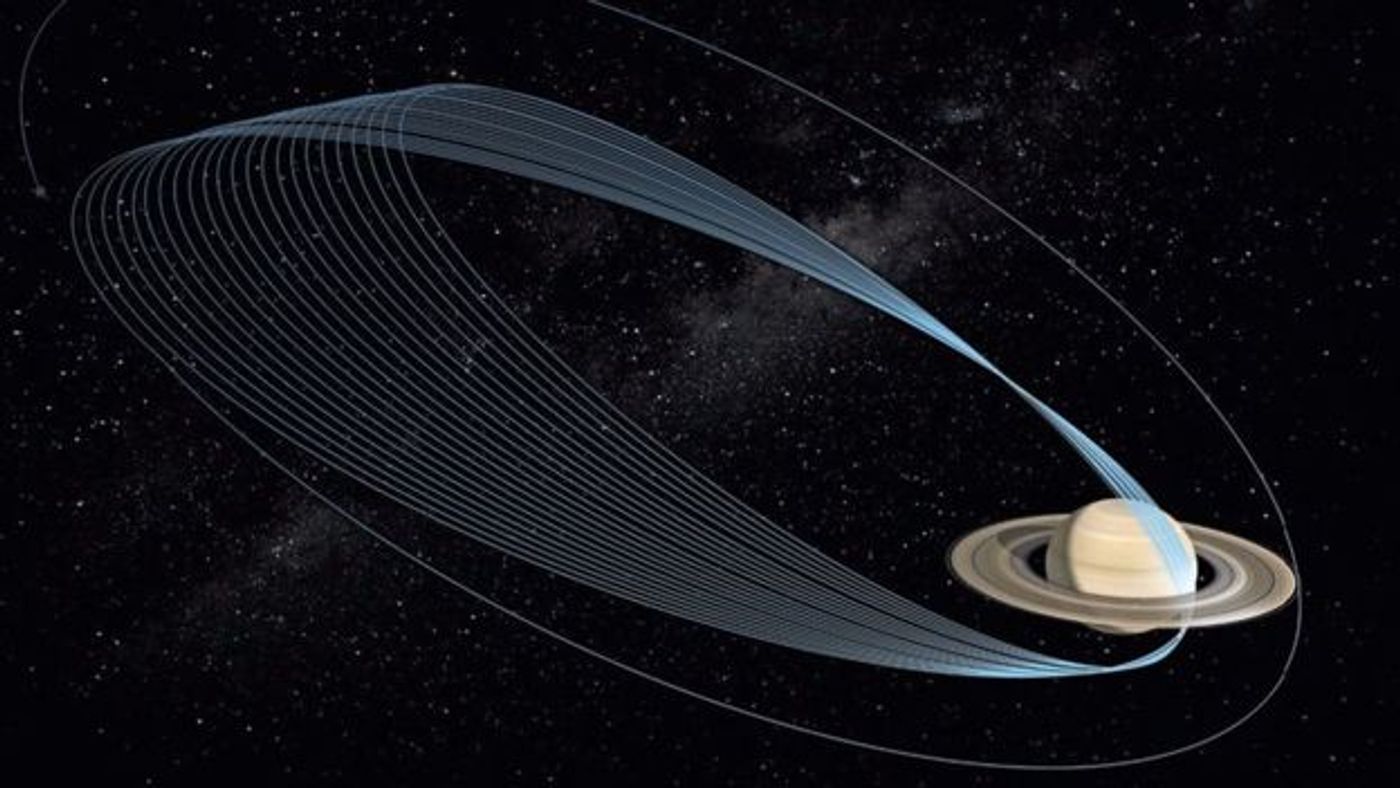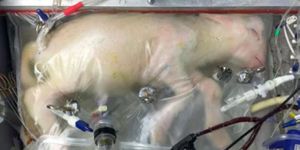Contact With Cassini Temporarily Halted As First of 'Dives' Begin
NASA has talked a lot about the future of its Cassini spacecraft these past few weeks, but the spacecraft has officially made one of its first dives in between Saturn and its rings to get some of the most detailed information that it can during its ‘grand finale’ before the suicide mission comes this Fall.
This is the orbital path Cassini will take 22 times before its suicide mission in Semptember. Image Credit: NASA/JPL-CALTECH
At this point in time, Cassini hasn’t been heard from for a while, and we’re not expected to hear back from it again until probably tomorrow. If you’re wondering why, it’s because NASA decided to use Cassini’s massive communications antenna as a shield, pointing away from the Earth instead of towards it.
It may sound like the most insane thing you’ve ever heard of, but there’s actually a really good explanation for doing this: because there are little ice and rock fragments orbiting Saturn, especially in its rings, Cassini is in real danger of being struck by one, and this would cause incredible damage to the spacecraft and its valuable sensors.
Shields Up! As we pass over #Saturn, we're turning our high-gain antenna into a shield RIGHT NOW to deflect oncoming ring particles. pic.twitter.com/kAxzY53uwT
— CassiniSaturn (@CassiniSaturn) April 26, 2017
"Because that gap is a region no spacecraft has ever explored, Cassini will use its dish-shaped high-gain antenna (13 feet or 4 meters across) as a protective shield while passing through the ring plane," NASA explained. "No particles larger than smoke particles are expected, but the precautionary measure is being taken on the first dive."
By using the antenna as a shield, NASA can mitigate any damage it might receive at the cost of simply losing contact with Cassini for a few days in between each dive that the spacecraft makes. The dives will help NASA to determine the size and mass of the rings, which will give us a better idea of whether they’re old or young.
When the spacecraft emerges on the other side of the planet, NASA will be able to re-establish a connection with Cassini and hopefully download all of the data it collected during the time we lost contact with it.
Cassini will complete a grand total of 22 of these dives before it goes into suicide mode in September and dives into Saturn’s atmosphere, a move that will prevent the spacecraft from flying into any of the Saturnine moons and potentially contaminating them. Scientists want to keep those moons pristine just in case there are any life forms that exist on any of them, as we've previously observed that some could have sub-surface oceans.
Why 22? Well, the spacecraft is almost out of fuel, and that’s about all it can muster before it finally runs out. It’ll need its last few drops of fuel to set course for Saturn’s atmosphere.
At this point in time, it’s a waiting game; but the data should provide information that NASA has been hoping to get their hands on for quite some time now. Although we’ll eventually be saying goodbye to Cassini, future missions are planned to explore Saturn’s possible life-supporting moons.
Source: NPR









